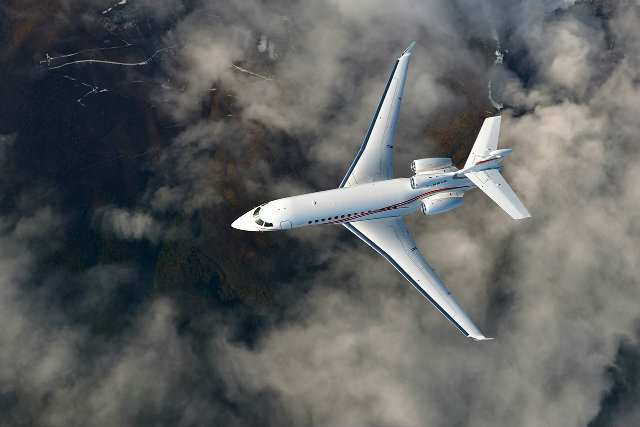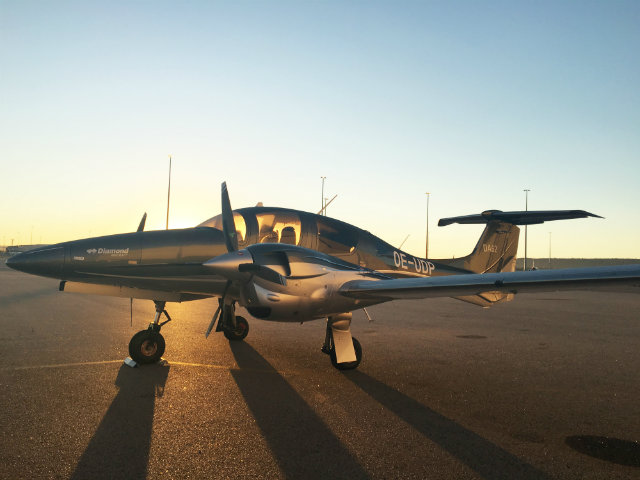There were mixed fortunes for the business and general aviation market in 2016, with the turboprop sector one of the few bright spots.
In its latest annual industry review, released on 22 February, the General Aviation Manufacturers Association (GAMA) records total deliveries of 2,262 fixed-wing aircraft in 2016, compared with 2,331 pistons, turboprops and business jets a year earlier. These shipments were valued at $20.7 billion – $3.4 billion less than in 2015.
The business jet sector was the worst performer, recording its lowest output since 2004, with shipments of only 661 aircraft, GAMA data shows, compared with 718 jets in 2015.
“This market has been rocked by a number of factors, including low oil prices and corporate profits, global economic and poiltical instability and a large inventory of used aircraft,” says GAMA president Pete Bunce. “When you add all these together, you can see why it is tough.”
Most manufacturers saw deliveries slide. Gulfstream was the worst performer, shipping 26% fewer business jets in 2016 than in the previous 12 months. GAMA data shows the airframer delivered 120 large-cabin G450/G550 and G650s, and 34 midsize G150 and G280s in 2015, compared with 88 large-cabin and 27 midsize jets last year.
In response to sluggish sales of its G150, the airframer stopped selling the 10-year-old model last year; the final aircraft will be delivered to its owner in mid-2017. The airframer hopes to bolster its large-cabin output when its clean-sheet G500 and G600 enter service in 2017 and 2018, respectively.
TOP-END TURBULENCE
However, the top-end of the business jet sector is going through a particularly rough patch, due largely to the waning appetite for big, long-legged business jets from the previously lucrative markets of China, Russia and the Middle East.
Like Gulfstream, Dassault’s product line is positioned in the top-half of the sector, and deliveries of its 7X, 8X, 900LX, 2000LXS and 2000S fell by an already low-base of 55 units in 2015 to 49 last year.

Dassault
It was worse for Airbus, who delivered only one VIP airliner in 2016 – an ACJ330 – compared with four units in 2015. Similarly, Boeing saw its output fall from 11 BBJ-series aircraft in 2015 – including the first BBJ 787-8 and -9 – to four last year.
A handful of OEMs bucked the downward trend. One Aviation delivered eight EA550 very light jets between January and December – one more than in the previous 12 months. Honda Aircraft recorded its first full year of HA-420 deliveries, handing over 23 of the light jets in 2016, against the four units shipped in the fourth quarter of 2015, when the aircraft entered service. Cirrus Aircraft’s Vision SF50 personal jet made its GAMA debut, with three aircraft shipped, having entered service in December.
Textron Aviation boosted its output by over 7% to 178 Cessna Citation-series jets, compared with 166 aircraft in 2015. The increase was largely down to the popularity of Cessna’s new midsize offering, the Latitude, which entered service in July 2015. It shipped 42 examples in 2016, against 16 during the final five months of the previous year.
Aerospace analyst Rolland Vincent says new products like the Latitude and HondaJet have given the business jet market much-needed stimulus.
“These new designs have captured the imaginations of buyers,” he says. “They offer something different – larger, quieter and more ergonomic cabins, innovative design, the latest avionics and systems integration, very competitive performance, and very good value for the dollar.”
Vincent describes the Latitude as a “proverbial home run” for Cessna. He expects production rates to accelerate in 2017 to 50-plus units, thanks to a “strong endorsement” from fractional ownership company NetJets, which placed an order in 2012 for 150 of the type.
PISTON PERFORMANCE
The piston aircraft sector was another poor performer in 2016. Shipments of single- and twin-engined models slipped by 3.5% to 1,019 units, GAMA data shows. With the exception of Cirrus, which recorded a 19-unit rise in deliveries of its SR-series to 320 aircraft, all the airframers saw their delivery outputs flatten or decline.
Tecnam shipped 191 piston singles for the second year running; Diamond Aircraft recorded a 12-unit slide to 132 aircraft, although deliveries of its flagship DA62 piston-twin soared from two units in 2015 to 30 last year – reflecting the type’s first whole year of production. However, the airframer also disclosed a 45% fall in deliveries of its four-seat DA40 during the period, from 75 to 48 units. Likewise, deliveries of Cessna’s piston-single family slid from 271 to 217 aircraft.

Diamond Aircraft
Bunce attributes this weak performance to a slowdown in private flying and a shrinking pilot population. “The private market is dominated by older pilots, and the pipeline of new entrants is drying up," he says.
Vincent agrees: “We don’t seem to have collectively 'cracked the nut' to lower the costs of entry, which is a huge barrier to pilot starts, and, more importantly, pilots staying active and moving up the food chain into instrument, commercial, and higher-level pilot ratings,” he says.
Vincent and Bunce believe the new business models that encourage whole aircraft and ride-sharing will help to boost the market. “Creative financing mechanisms would also be a stimulus,” says Vincent.
BRIGHT SPOT
The turboprop sector was the only segment to record a year-on-year increase in shipments, according to GAMA data which shows 557 single- and twin-engined designs were delivered in 2015, compared with 582 units in 2016.
Pilatus was the strongest performer, recording a 21-unit hike in PC-12NG deliveries to 91 aircraft. Quest shipped 36 Kodiaks in 2016 – four more than the previous year; while Thrush recorded a 10-unit rise in deliveries of its S2R-family to 39 aircraft – reflecting a turnaround in the agricultural aircraft sector.
The introduction of Piper’s flagship M600 in May lifted the airframer’s turboprop tally by around 25% to 34 units, although shipments of its older M500 stablemate fell during the same period from 27 to 12 aircraft.
The entry into service last year of Daher’s flagship TBM 930 has had a similar impact on sales of its baseline offering, the TBM 900, GAMA reveals. The French airframer recorded 55 deliveries in 2015 – all TBM 900s – and 54 last year – consisting of eight TBM 900s and 46 TBM 930s.
For Bunce, the turboprop sector is “the bright spot” in the fixed-wing market. He attributes their success to “a low cost of ownership, operation and incredible versatility”.
The popularity of turboprops has helped to shrink the inventory of used aircraft to pre-financial crisis levels, Vincent explains. “These aircraft are no-nonsense, reliable performers, that are the workhorses of the industry,” he says.
Overall, GAMA’s 2016 shipment numbers are in line with market expectations, but Vincent believes it will take some time for the industry to return to “better health”.
He predicts a further decline in business jet deliveries in 2017 and 2018, and then a “return to higher levels of output”, strengthened by the entry-into-service of a wave of new models, including the superlight PC-24, the large-cabin G500/600 and Citation Longitude as well as the ultra-long-range Bombardier Global 7000.
“With the strengthening US dollar and much uncertainty as to the future of multilateral trade agreements involving North America and Europe, it is likely that the demand for new business aircraft will be more US-centric, at least for the short term,” says Vincent.
Source: Flight International



















